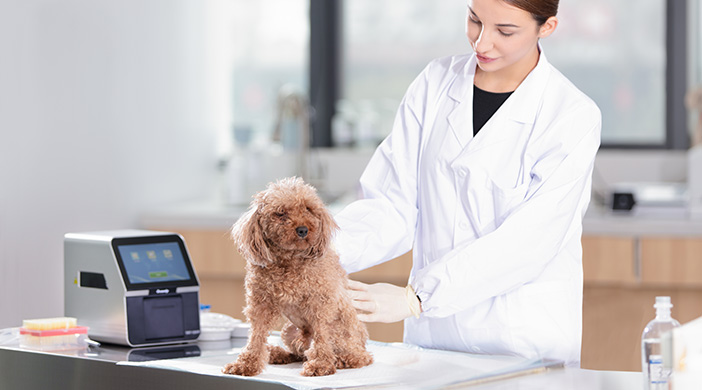Portable dry biochemistry analyzers have brought great convenience to medical institutions at all levels. Due to its convenience, it can be operated without the need for a professional laboratory physician. However, the test results can also be unsatisfactory due to misuse and other reasons. Today, let's take a look with Seamaty to see what details we should pay attention to when using the dry biochemistry analyzer and its reagents. Take the Seamaty SD1 automatic dry biochemistry analyzer as an example.
1. Abnormal samples interfere with biochemical tests
Bilirubin in jaundice samples, hemoglobin in hemolysis samples, and celiac particles in lipid blood samples are colored substances. These substances disrupt the original optimal wavelength selection for the experiment. This may result in large errors in absorbance. As a result, this may directly affect the accuracy of the biochemical assay.
① Hemolysis: The red blood cells in the blood are destroyed and released into the blood to make the serum or plasma red.
②Lipemia: Lipids enter the blood and make the serum or plasma milky white.
③ Jaundice: excessive bilirubin content in the serum or plasma, making the serum or plasma appear bright yellow to the naked eye.
When abnormal samples are encountered, the plasma or serum needs to be tested again after centrifugation.
2. Dry biochemical analyzer operation precautions
1) Reagent tray warming
After taking out the reagent tray from 2-8℃ refrigerator, it should be warmed up at room temperature for 20 minutes (you can cover it with your hand to speed up the warming up). It is forbidden to open the aluminum foil packing bag in advance to prevent the reagent beads from failing.
2) Reagent tray handheld way
Tear the bag along the incision, hold the reagent tray side, and place it horizontally on the clean table with the two-dimensional code facing up.
3) Sample addition requirements
Standardize the use of pipette gun. Avoid taking too many samples or injecting air when adding samples, inhaling air bubbles and blocking the capillary tube. The recommended sample volume is 100uL, the reagent tray is tilted downward along the direction of the arrow in the sample hole, and the tip of the pipette gun is inserted vertically into the sample hole.
4) Start the test
After clicking Ready to Test, the tray holder will automatically exit the bin after 3 seconds. Please do not click to start the test in advance.
5) Sample information entry
The plate rack is normally returned to the compartment after scanning. The biochemistry screen will automatically pop up the sample information interface. Record the relevant information and save it, otherwise there is no reference range for individual items.
6) Use of pipette gun
When using the distribution pipette gun to add samples, use the first gear uniformly. (Pay attention to whether the quantitative volume of the pipette gun is 100ul)

7) Operation of sample addition
When adding a sample, the QR code should be facing upwards and the pipette gun should be slightly tilted. Slowly inject the sample in the direction of the arrow from the sample hole next to the QR code. Note: Lift the pipette gun before releasing your finger after adding the sample to prevent the sample from being sucked backwards, causing insufficient sample volume and air bubbles.

8) Wrong use of anticoagulation tube
Seamaty uniform use: lithium heparin anticoagulation tube (blood routine EDTA anticoagulation tube will make amylase and ion items abnormal)
Seamaty reagent discs: 2~8℃ refrigerated, valid for 1 year. Expired reagent discs cannot be used; (Note: changing the time cannot solve the expiration problem)
Common reagent disc problems.
-
1) Reagent tray expired
-
2)Capillary tube shake off, sample blocking tray
-
3) a single disk bad
These are the details that need to be noted when using a portable dry biochemistry analyzer. Avoid these problems will be able to easily use the biochemical analyzer.




